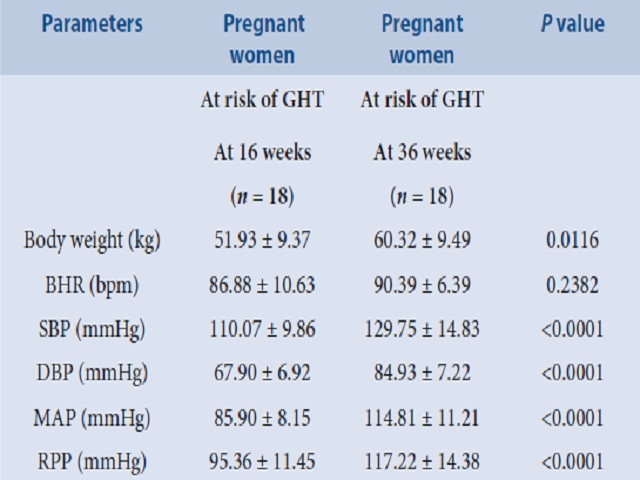Sympathovagal Imbalance, Decreased Baroreflex Sensitivity and Increased Myocardial Work Stress in Pregnant Women with Risk of Developing Gestational Hypertension: A Preliminary Report
Abstract
Background and Aim: Though the mechanisms responsible for the pathogenesis of Gestational Hypertension (GHT) are unclear, it has been reported that the disease is characterized by low circulating volume and high vascular resistance. The increased peripheral vascular resistance is caused due to sympathetic overactivity which in turn causes the increase in blood pressure and Cardiovascular risk (CV). Therefore, in the present study, we aimed to study the sympathovagal imbalance, Baroreflex Sensitivity (BRS) and Rate Pressured Product (RPP) in pregnant women with risk of developing GHT during their first and third trimesters of gestation. Methods: Heart Rate (HR), Systolic and Diastolic Blood Pressure (SBP, DBP) were measured. Rate-pressure product was calculated using SBP and HR. Spectral analysis of Heart Rate Variability (HRV), Blood Pressure Variability (BPV) including BRS were assessed in a group of pregnant women (n=18) with risk factors for GHT at 16th week and 36th week of their gestation. Parameters were compared after 36th week with 16th weeks and analyzed. Results: It was observed that the ratio of low-frequency to high-frequency power (LF-HF ratio) of HRV was significantly increased at 36th week of pregnancy compared with 16th week. There was decreased BRS at 36th week of pregnancy in risk of GHT. Significant increase in RPP was seen at 36th week of pregnant women with risk of developing GHT when compared with 16th of gestation. Conclusion: In the present study we conclude that there is sympathovagal imbalance in pregnant women with risk of developing GHT. Also reduced BRS and increased RPP were seen in these subjects indicating that there was increased CV risk in these patients.






